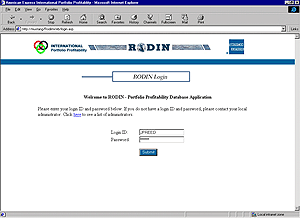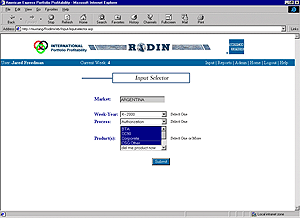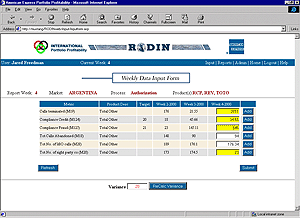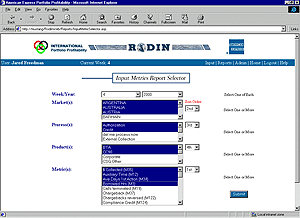Software Development Under Control


Customer: American Express
American Express Company is a leading global payments, network and travel company founded in 1850. For more information, visit www.americanexpress.com.
At Issue:
American Express Global Operations MIS had been doing client server applications up until this project and had not yet done a fully internet based application. They had a new requirement for a Risk Operations metric data capture tool, and it seemed like a good prospect for a purely internet based tool. There were only four months to complete the project, with stake holders in New York, France, Arizona, and Miami.
The Solution:
After meeting with all stakeholders, a design for the Risk Operations Data Input
Network (RODIN) was created by input from all parties.
The result was the RODIN Intranet portal, used globally for the entry of important
risk operations metrics by field managers in their various business units.
The application provides a secure sign-on which then recognizes which business,
units, countries, and metrics you have rights to use.


Only the countries that are permitted are displayed, based on the users login, and
only the metrics which they are allowed to see are available as well. Once they
select a set of metrics to work with, they proceed to the metric entry screen.


The primary data entry screen displays the current week and allows them to make
an entry, it will also show the value from last weekly reporting period, and same
period for the past two years.
When they make data entries, anything that falls outside a pre-approved variance
will appear yellow, which is a visual cue that the number may be wrong.


Many of the client server applications that had been done previously were centrally
managed and could only be maintained by MIS personnel.
The RODIN system was the first to implement the now common Self Service concept,
which allows local administrators to maintain the supporting metadata without the
involvement of IT.


Also, the RODIN system has a report generating system that allows the user to select from a wide variety of input options, which will then generate the report on-the-fly, to be delivered to their browser.


The reports come to the browser as RTF format files, which provide WYSIWYG functionality, something important in the production of long columns of numerical data. This system was a big success, and had an over five year life span before upgrade, which was a substantial return on the modest investment made to write it.
